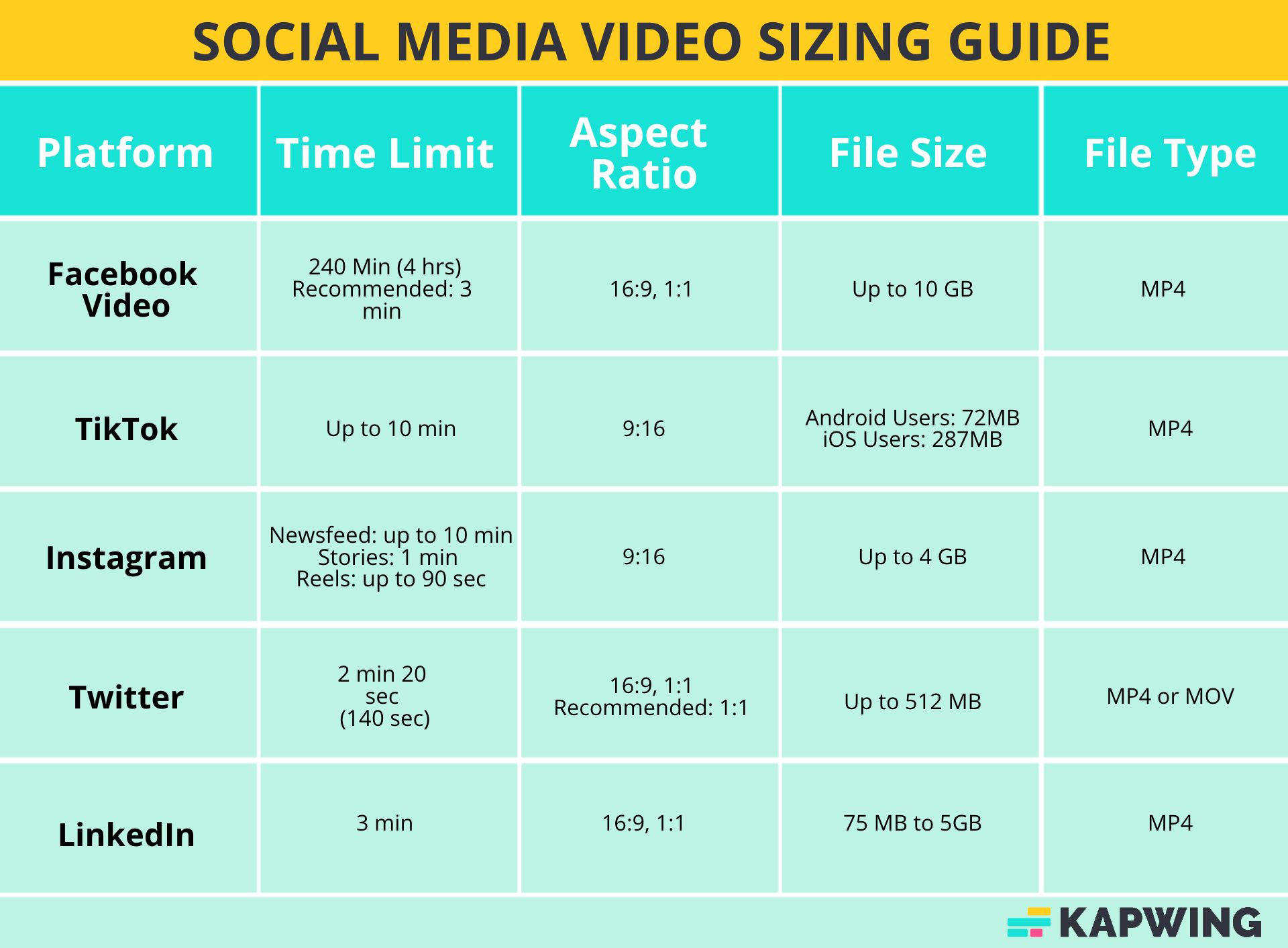If you’re diving into the world of stock videography, Shutterstock is one of the top platforms to showcase your work. But before you hit upload, it’s essential to understand their specific video requirements. Shutterstock has clear guidelines to ensure your videos meet quality, format, and length standards, making the approval process smoother. From resolution to file size, knowing these details can save you time and frustration. Whether you’re a seasoned creator or just starting out, getting familiar with
Why Video Length Matters for Shutterstock Submissions

Ever wondered why some videos get accepted quickly while others linger in review? The length of your video plays a big role in its suitability for Shutterstock. Generally, Shutterstock prefers videos that are concise yet comprehensive—think in the range of 5 seconds to 60 seconds. Why? Because shorter videos are more versatile for buyers who want quick clips for their projects, ads, or social media content. Longer videos can work too, especially if they tell a compelling story or cover a topic thoroughly, but they often require higher quality and more careful editing to keep viewers engaged.
Moreover, the platform tends to favor videos that are directly relevant and easy for users to incorporate into their projects. For example, a 10-20 second clip of a smiling person or a scenic view can be perfect for background videos or social media snippets. On the other hand, overly long videos might need to be edited into shorter segments or have specific usage rights clarified. In essence, understanding the optimal length helps you craft videos that are more likely to be approved and appreciated by buyers, boosting your chances of success on Shutterstock.
Recommended Video Length for Different Types of Content
When it comes to uploading videos on Shutterstock, one of the most common questions is: how long should my videos be? The answer largely depends on the type of content you’re creating. Different genres and purposes have their own ideal durations, so understanding these can help you craft videos that resonate with buyers and meet platform standards.
Let’s break it down by content type:
Stock Footage and B-Roll
- Ideal Length: 5 to 30 seconds for short clips, up to 1 minute for more comprehensive shots.
- Why: Buyers often look for versatile clips that can be easily integrated into their projects. Short, focused shots are preferred because they’re easier to edit and fit into various contexts.
How-To and Tutorial Videos
- Ideal Length: 1 to 3 minutes for quick tutorials; up to 5 minutes for more detailed guides.
- Why: Viewers want concise, informative content. Keeping tutorials short and to the point increases engagement and the likelihood of being purchased.
Promotional and Corporate Videos
- Ideal Length: 30 seconds to 2 minutes.
- Why: These videos aim to capture attention quickly and deliver a clear message. Lengthy videos may lose viewer interest, especially in a busy marketplace.
Animations and Creative Clips
- Ideal Length: 10 seconds to 1 minute.
- Why: Short animations are often more impactful and easier to consume. For longer sequences, consider breaking them into shorter segments for better usability.
Remember, these are general guidelines. The key is to keep your videos focused and engaging. If your content is longer, make sure every second adds value. Buyers appreciate high-quality, relevant footage that saves them editing time, so avoid making videos unnecessarily long just to meet a certain length.
Best Practices for Creating Videos That Meet Shutterstock Standards
Creating videos that align with Shutterstock’s standards is crucial for getting your content approved and sold. Here’s a checklist of best practices to help you produce professional, high-quality videos that stand out:
1. Maintain High Visual Quality
- Resolution: Upload in at least 4K (3840×2160) or Full HD (1920×1080). Higher resolution videos are more versatile and appealing.
- Focus: Make sure your footage is sharp, well-lit, and free of motion blur or focus issues.
2. Mind Your Audio
- Clarity: Use clear, high-quality audio if your video includes sound. Avoid background noise and distortions.
- Music and Sound Effects: Ensure you have the rights to any music or sound effects used, and keep volume levels balanced.
3. Follow Technical Specifications
- Format: Upload in MP4 or MOV formats.
- Frame Rate: Use standard frame rates like 24, 25, or 30 fps.
- File Size: Keep files optimized for upload without compromising quality.
4. Create Content with Commercial Use in Mind
- Model Releases: Obtain releases if your video features recognizable people or private property.
- Property Releases: Secure releases for private locations or branded products.
- Avoid: Content that includes copyrighted material, logos, or trademarks without permission.
5. Focus on Composition and Lighting
- Composition: Use the rule of thirds, steady shots, and avoid shaky footage.
- Lighting: Shoot with natural or well-controlled lighting to improve clarity and color accuracy.
6. Edit Thoughtfully
- Transitions: Use simple transitions; avoid overusing effects that distract from the content.
- Color Correction: Enhance colors for a vibrant, professional look.
- Duration: Keep videos concise and engaging, trimming unnecessary footage.
Following these best practices will not only improve the quality of your videos but also increase their chances of approval and success on Shutterstock. Remember, quality, relevance, and adherence to legal standards are key to thriving in the stock footage marketplace. Happy filming!
Common Mistakes to Avoid When Determining Video Duration
Figuring out the perfect length for your stock videos can be trickier than it seems. Many creators fall into some common pitfalls that can impact their chances of getting accepted or making sales. Let’s chat about these mistakes so you can steer clear of them and produce videos that hit the mark.
1. Overloading with Unnecessary Content
One big mistake is packing your video with too much information or too many scenes. While it might be tempting to showcase every detail, this can make your video feel cluttered and overwhelming. Remember, stock buyers often look for clips that are concise and versatile. Keep your footage focused on one or two key ideas or actions.
2. Making Videos Too Short or Too Long
It’s easy to underestimate or overestimate the ideal length. Too short, and you might not provide enough context; too long, and viewers lose interest. As a rule of thumb, most stock videos perform well between 5 to 30 seconds. Anything beyond that can become less appealing unless it’s a specific narrative or scene that needs more time.
3. Ignoring the Audience’s Needs
Think about who will be using your clips. Are they for commercials, presentations, or social media? Different platforms and uses have different expectations. For instance, social media videos often do best when they’re quick and punchy—around 6 to 15 seconds—while corporate videos might need a bit more length.
4. Not Considering Loopability
If your video is meant to be looped, like a background or abstract clip, make sure the length supports seamless looping. Avoid abrupt cuts or endings that disrupt the flow. Loopable videos often work best when they are around 10-15 seconds, giving enough material to repeat smoothly.
5. Forgetting to Check Shutterstock Guidelines
Each platform has its own rules about maximum and minimum durations. Failing to review Shutterstock’s specific requirements can lead to rejection. Always double-check their current standards—usually, they prefer clips to be under 60 seconds but with some flexibility depending on the content.
Tips for Editing Videos to Optimize Length and Quality
Once you’ve captured your footage, editing is where the magic happens. The goal? Create a polished, engaging clip that fits the optimal length for Shutterstock and appeals to buyers. Here are some helpful tips to get you there:
- Start with a clear concept: Know what story or idea your clip is telling. This helps you cut unnecessary parts and keeps the focus sharp.
- Trim the fat: Use editing software to cut out any shaky, dull, or repetitive segments. Keep only the most dynamic, high-quality shots.
- Use pacing wisely: Vary your shot durations to maintain viewer interest. Quick cuts can energize the clip, while slower moments can add emphasis.
- Optimize for loopability: If your clip loops, start and end scenes in a way that they connect seamlessly. This might mean trimming the beginning or end slightly for a perfect fit.
- Enhance visual quality: Adjust brightness, contrast, and color grading to make your footage pop. Clear, vibrant videos are more likely to attract buyers.
- Keep audio minimal or clean: If your video includes sound, ensure it’s crisp and relevant. For background clips, consider removing audio altogether to increase versatility.
- Save different versions: Export multiple edits with slight variations in length or style. This gives you options when uploading and can increase your chances of acceptance.
By paying close attention to these editing tips, you’ll produce clips that are not only the right length but also polished and professional. Remember, the key is to balance quality with length—creating videos that are engaging, versatile, and ready to meet Shutterstock’s standards. Happy editing!
Conclusion and Final Recommendations for Shutterstock Video Uploads
Optimizing your video uploads on Shutterstock is essential to maximize visibility, engagement, and sales. To achieve the best results, focus on creating high-quality content that aligns with popular categories and trends. Keep your videos concise yet comprehensive; typically, videos between 15 to 60 seconds tend to perform well, as they are easily consumable and shareable. Ensuring your videos have professional editing, clear visuals, and high resolution can significantly impact approval rates and viewer interest.
When considering the ideal length, remember that Shutterstock’s audience favors shorter clips for quick projects and social media use, while slightly longer videos can work for in-depth storytelling or tutorials. Use descriptive, keyword-rich titles and tags to improve discoverability. Additionally, adhere to Shutterstock’s technical specifications, including format, aspect ratio, and file size, to prevent rejection or delays in approval process.
As a final tip, always review your analytics to understand which lengths and content types resonate most with your audience. Experiment with different lengths within the recommended range to identify the sweet spot for your niche. Consistency in uploading fresh content and maintaining high standards will help build your portfolio and increase your chances of success on the platform.
In conclusion, balancing quality, relevance, and optimal length is key to thriving on Shutterstock. By following these guidelines and continuously refining your approach, you can enhance your visibility and generate better returns from your video contributions.

